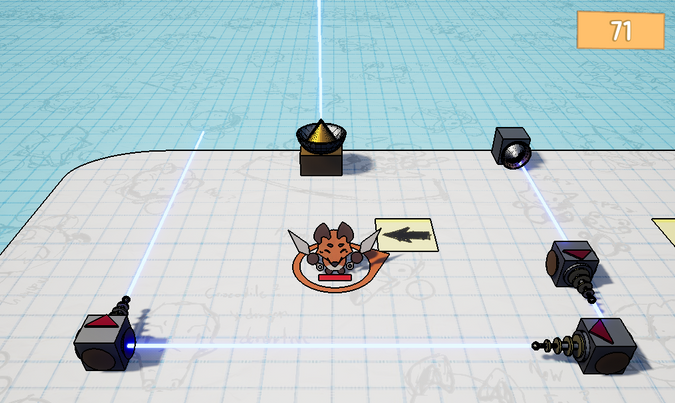Austin Edwards
Game Designer
Paper Pals
Game of the Year
HPU Game Awards
April 2025

Platform:
PC
Tools Used:
Unreal Engine 5, Blender, Photoshop
Duration:
Ongoing
Team Size:
6
Overview:
Papers Pals is a 1–4 player party game where teamwork and sabotage go hand in hand. Players must solve puzzles, overcome challenges, and defeat enemies to reach and vanquish the evil Paper King and save the day.
Each game is a mix of cooperation and chaos, where players utilize the unique abilities of their paper-thin characters to outsmart both the game and their opponents in a race toward victory.
Role:
Project Lead
Game Designer
Gameplay Programmer
Role Info
Project Lead:
-
Directed a cross-functional team of designers, programmers, and artists from concept to beta
-
Defined project scope, milestones, and sprint goals using Agile methodologies
-
Facilitated team communication, standups, and conflict resolution to ensure consistent progress
-
Coordinated playtesting and iteration cycles, balancing feedback with production timelines
-
Managed version control and ensured smooth integration across all departments
Game Designer:
-
Designed a modular room system with Puzzle, Minigame, and Combat types to form the core gameplay loop
-
Created over 15 unique room designs, each offering challenges tailored to player choice and character abilities
-
Designed 7 enemy AI types and a boss encounter with distinct behavior to support diverse combat encounters
-
Collaborated with character designers to ensure mechanical synergy between characters and rooms
-
Balanced enemy pacing and difficulty to maintain a satisfying challenge curve across player counts
Gameplay Programmer:
-
Built integration between rooms and a central HUB system, enabling random playthroughs
-
Developed 7 enemy AIs and a multi-phase boss fight using state machines and custom behavior logic
-
Implemented core room functionality, including interactive elements, player-triggered events, and hazards
-
Created scalable systems that adjusted difficulty based on player count and progression
-
Maintained modular, designer-friendly code to allow for rapid iteration and team-wide collaboration
Making the Laser Gallery
Overview:
While I designed and programmed a majority of the rooms found in-game, the Laser Gallery is the most complex room that I created alone and the one that required the most amount of time. This includes all aspects of design and programming. The room was inspired by the various laser puzzles found within Portal 2.
Design Goals
-
Eye-catching and flashy room
-
Emphasizes spatial reasoning, timing, and player experimentation
-
Balanced difficulty that escalates with player understanding
-
Seamless integration of visual feedback and puzzle progression
-
Designed to challenge and reward critical thinking

This system handles: start and end point randomization, interactable object spawning, player number difficulty scaling, and room effects.

The control system is in charge of all operation for the room after setup. This system handles: room win-lose state, environmental objects, and room resetting.

The room is completed by reflecting and redirecting lasers to targets. This is the system to manage such systems.

The laser itself is the most dynamic element of the room. It spawns at certain length and only actives a target that shares an ID and color.




